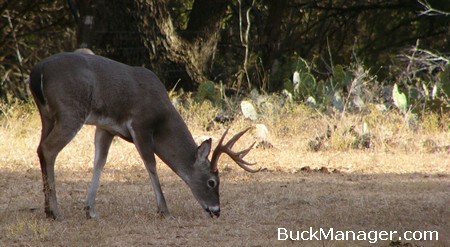
White-tailed deer hunting is already underway for Texas bowhunters and those ranches participating in the Managed Lands Deer Permit (MLDP) Program, but the General Season–we call it gun season–is just around the corner for the rest of Texas’ hunters. This is when the majority of deer hunters head to the field to make memories and bag and tag their personal trophies. And for those gun hunters, November 3 can not get here fast enough. But the good news for those with sharp knives, empty coolers and elevated heart rates is that opening day is just over two weeks away and Texas Parks and Wildlife Department (TPWD) says things are looking good for both deer and deer hunters.
Source: “The white-tailed deer herd in Texas is doing well and stable. Despite one of the worst droughts on record last year, the deer population came through with minimal population impacts. Most areas experienced low fawn survival last year, as to be expected, but we had very few reports of any significant adult mortality related to the drought.
Whenever a wildlife biologist talks about hunting prospects, weather is the caveat. It’s the one variable that land managers, biologists and hunters have no control over, yet it plays a critical part of the deer hunting equation.
Winter and spring moisture was much better compared to last year, and most of the state has received much-needed rain this spring to boost forage resources needed for antler development and fawn rearing. Far West Texas, primarily mule deer country, is still dry. I expect this to be an average to slightly above-average season for antlers. South Texas, known for trophy bucks, should be in good shape as we’ve had rain this summer. The Texas Hill Country, known for higher whitetail deer populations, has also received good rains this summer, so hunters should expect decent antler growth and good body weights for this region.”
There’s no doubt that this year has been better than the previous one, but the truth is that some properties may not see increased fawn numbers or better than average deer body conditions. This may be due to a lack of deer and habitat management, the absence of predator control or combination of many issues. Not doing anything to benefit wildlife or worse, doing the wrong things (complete mismanagement), can negatively impact deer health and recruitment and survival on a single property or even within a given area, particularly if many of the property owners are doing the same, detrimental things. There is more to deer than just shooting them. Deer hunting when paired with proper harvest is definitely a part of whitetail deer management, but it’s far from the only part.
County-based hunting regulations implemented by TPWD are probably dependent on factors such average habitat type, average deer density and average hunter density within a county. Notice the word “average” appears many times in the previous sentence. It’s not a knock against TPWD, but rather respect for the challenges that all state wildlife agencies face when developing hunting regulations for large areas, especially when the guy with 60 acres of deer habitat wants to shoot as many deer as the guy with 600 acres of deer habitat. But it works both ways. Shooting too few deer on large acreage is as bad as shooting too many on small acreage.
The only way to make hunting better than average and really improve deer hunting on any property is to track the deer herd from year to year through deer surveys, develop harvest recommendations based on those herd estimates, achieve those harvest objectives and provide habitat that meets or exceeds the food, cover and water requirements of whitetail deer. Habitat conditions are way better this year than they have been in the recent past, so that bodes well for all wildlife, including deer. And to me every deer hunting season is a good one, so come on November!